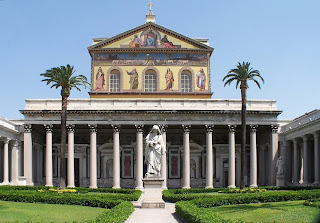Irish aristocrat fell in love with Naples
 |
| Lady Blessington, depicted here by Thomas Lawrence, settled in Naples after touring Europe |
She was to stay in the city for nearly three years and her detailed account of what she saw and who she met has left us with a unique insight into life in Naples nearly 200 years ago.
Lady Blessington made herself at home in Naples and thoroughly embraced the culture, attending local events, making what at the time were adventurous excursions, and entertaining Neapolitan aristocrats and intellectuals at the former royal palace that became her home.
Those who know Naples today will recognise in her vivid descriptions many places that have remained unchanged for the last two centuries.
She also provides a valuable insight into what life was like at the time for ordinary people as well as for the rich and privileged.
A society beauty, she came to Naples during a long European tour after her marriage to Charles Gardiner, the first Earl of Blessington, and immediately became fascinated by the local customs, food and traditions. She also visited Ercolano, Paestum, Capri, Ischia and Sorrento and made an ascent of Vesuvius on an ass.
 |
| The Vomero hill offers spectacular views over Naples |
She was so impressed with her first view of the city that she ordered the postilions to pause on the brow of the hill so that she might fully appreciate the panorama in front of her.
She recalls: “… as our eyes dwelt on it, we were ready to acknowledge that the old Neapolitan phrase of ‘Vedi Napoli e poi mori’ - 'see Naples and die' - had a meaning, for they who die without having seen Naples, have missed one of the most enchanting views in the world.”
Three days later, having looked at half the palaces in Naples, she arranges to rent the Palazzo Belvedere at Vomero, describing it as: “…one of the most beautiful residences I ever beheld, in the midst of gardens and overlooking the Bay. The view it commands is unrivalled; and the gardens boast every rare and fragrant plant and flower that this delicious climate can produce.”
In February 1826 she writes with sadness about her planned departure from Naples. “As the time approaches for quitting Naples, my regret increases. A residence of nearly three years has attached me to the country and the people by ties that cannot be rent asunder without pain.”
Lady Blessington’s Neapolitan Journals are fascinating and endearing and have inspired many people to visit the city over the years. There is an abridged version of the journals in Edith Clay’s book Lady Blessington at Naples published by Hamish Hamilton.
 |
| The Royal Palace, once home to the Kings of Naples |
Lady Blessington mingled in royal and aristocratic circles while in Naples and would have visited the Royal Palace (Palazzo Reale), one of the magnificent residences of the Kings of Naples. The palace is at the eastern end of Piazza del Plebiscito and dates back to 1600. It now houses a 30-room museum and the largest library in southern Italy, which are both open to the public.
Travel tip:
You can take the funicular railway up the hill to Vomero, where Lady Blessington lived for a while, to see the fine views over the city and the bay of Naples. It is well worth visiting the 14th century Castel Sant’Elmo for for what you can see from its vantage point.
Home






